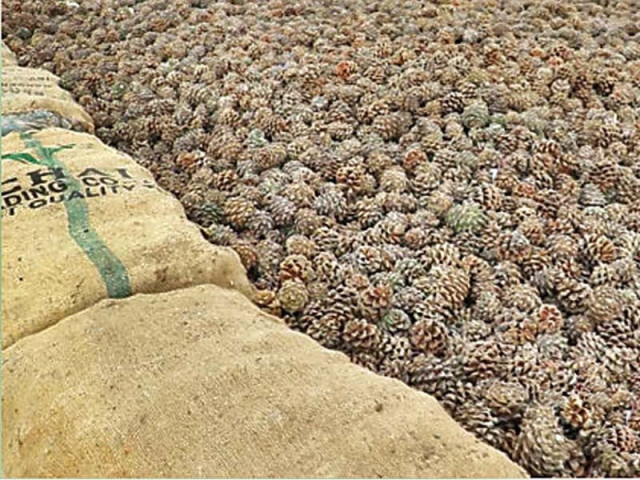Pine nuts: luxury in Chinese market
They enjoy high premium in China and are listed as high-end snacks

It is still a month away from Pakistan’s pine nut harvest season, but Chinese buyers can’t wait.
On a mainstream e-commerce platform in China, a store selling Pakistani pine nuts (produced in western Pakistan) has sold 10,000+ bags a month, and got 3,009 comments.
“The pine nut has a strong flavour with full and large kernel. It can be shelled with just a slight pinch, and fresh kernels lay inside.” Those comments have shown Chinese consumers’ high praise for them. However, it is only one of hundreds of Pakistani pine nut e-retailers in China.
Consumers’ favour for Pakistani pine nuts has led to troubles for Chinese businessmen. “In the past lean year for Pakistani pine nuts, I could purchase them whenever I wanted. However, it turned out be a tough year to import raw pine nuts in 2020 when Pakistan had a bumper harvest of pine nuts,” a director of a Chinese enterprise, which has been engaging in Pakistani pine nuts processing for more than 10 years, told China Economic Net (CEN).
“Moreover, the price of Pakistani pine nuts has been soaring high. This year is the 11th year of our Pakistani pine nut business, but we all think of turning to other fields,” he added.
In China’s nut market, Pakistani pine nuts can be described as a real luxury product. Its selling price on China’s main e-commerce platforms is about RMB 320-600 (about Rs7,510-14,080) per kg. However, Pakistani exporters said the local pine nut price is halved, only Rs1,700 (about RMB 71 ) per kg.
How does the price of the same product see such a great difference in China and Pakistan? Is Pakistan likely to export more pine nuts to China?
Chinese demand
According to the data released by the International Nut and Dried Fruit Council, China is the second largest consumer of pine nut. In 2018, the pine nut consumption in China amounted to approximately 3,474 tons, about 1.2 times the average annual output of Pakistan in recent five years.
As one of the three major pine nut varieties in the Chinese market, Pakistani pine nuts enjoy a high premium and are listed as high-end snacks. A bag of 250g Pakistani pine nuts costs about RMB 80 (about Rs2,033), nearly twice that of other Chinese pine nut varieties.
The favour of Chinese consumers for Pakistani pine nuts has driven huge import demand, and China has become the main export destination of Pakistani pine nuts. According to the data released by Pakistan Agriculture Marketing Information Service, Pakistan exported 692 tons and 73.9 tons of pine nuts to China in fiscal year 2018-19 (July 2018 June 2019, bumper harvest of Pakistani pine nuts) and 2019-20 (lean year for Pakistani pine nuts), respectively, with a value of Rs820 million and Rs190 million, accounting for 45.86% and 14% of the total export of Pakistani pine nuts.
However, after the bumper harvest of Pakistani pine nuts in October last year, Chinese enterprises have continued to face the problems of purchase difficulties and high prices.
“Obviously, it was a bumper harvest year. Before the Spring Festival (February), I wanted to buy extra 200 bags. They were out of stock. After the Spring Festival, the price of raw materials rose abnormally, from RMB 180 /kg (about Rs4,566) to RMB 220/kg (about Rs5,581). Compared with RMB 120 per kg (about Rs3,044) in previous years, it has increased by RMB 100 (about Rs2,537), almost doubling,” said the director, adding that “my clients were unwilling to take them. Only four out of 50 clients could accept the price”.
This article originally appeared on the China Economic Net
Published in The Express Tribune, September 5th, 2021.
Like Business on Facebook, follow @TribuneBiz on Twitter to stay informed and join in the conversation.


















COMMENTS
Comments are moderated and generally will be posted if they are on-topic and not abusive.
For more information, please see our Comments FAQ